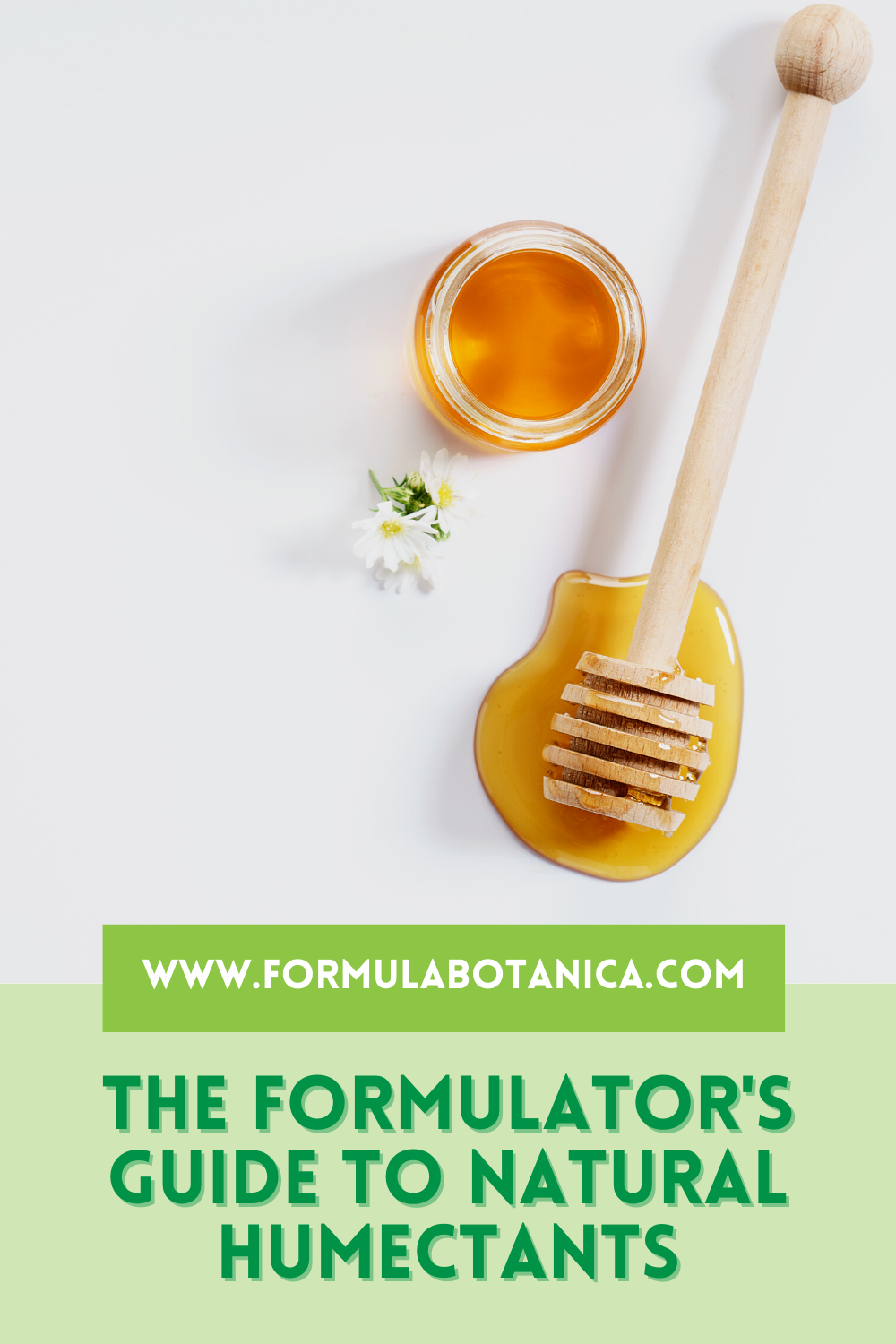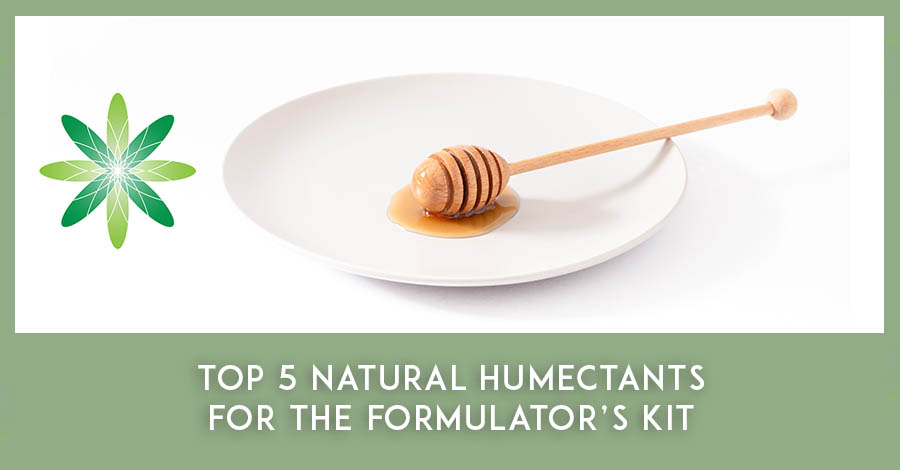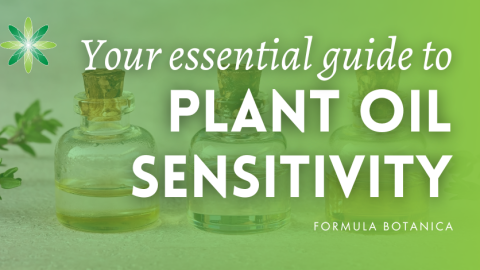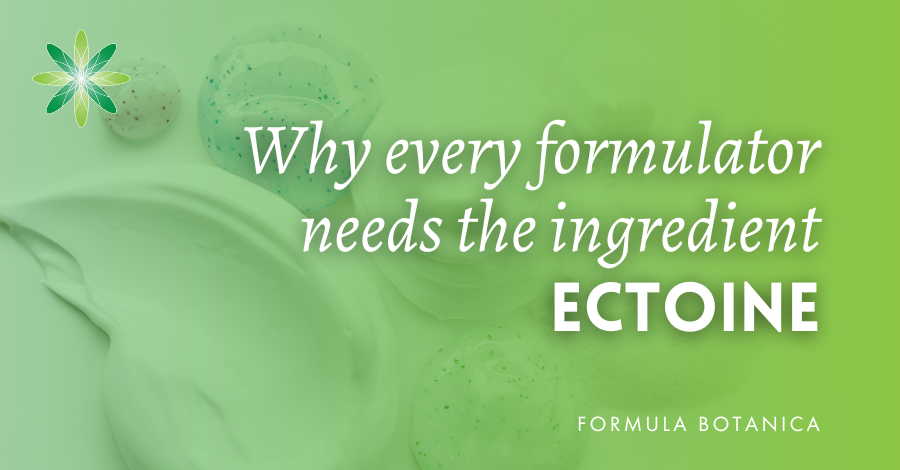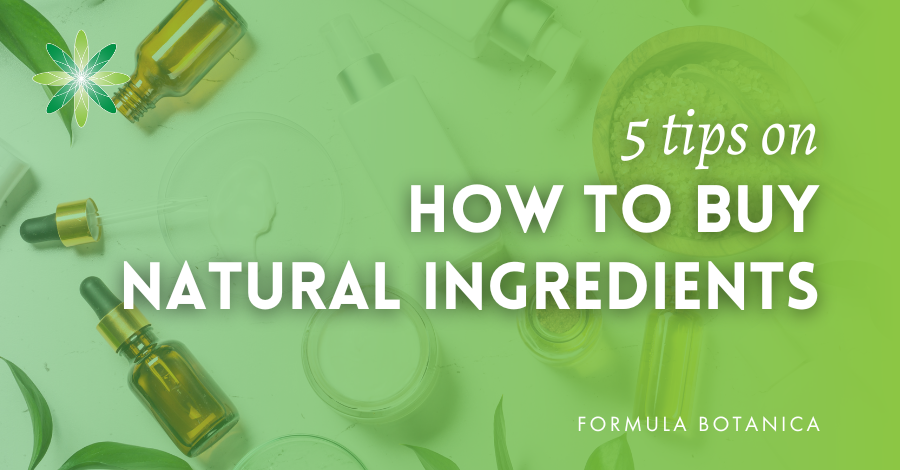At Formula Botanica, we categorise natural humectants as functional ingredients. Obviously, each ingredient in a well-formulated cosmetic product should have a distinct function. As natural skincare and haircare formulators, we tend to be very conscious of every ingredient we use and are perhaps more demanding of the roles they perform.
Humectants are common cosmetic ingredients and feature in many of the formulations on this site. However, to use them effectively we need to delve into the science of how humectants work in our skincare and then choose the most appropriate for our formula’s needs and for our product outcome.
This guide to natural humectants is designed to give you enough depth to feel comfortable making those decisions. We cover a top 5 natural humectants to trial in your formulations, but encourage you to do your own further research into cosmetic ingredients with humectant properties.
Before we dive into humectants, we thought you might like to know about other posts in our Formulator’s Guide series:
What is a Humectant?
A cosmetic humectant is defined as a substance that moisturises the skin but it does this in a very specific way. As hydrophilic, or water-loving ingredients, humectants attract water to the skin as opposed to two other categories of common functional ingredients – occlusives and emollients – which act to reduce water loss or to repair the skin’s lipid barrier. Occlusives include butters and waxes and emollients are ingredients such as squalane and triglycerides.
How does a Natural Humectant Work in Skincare?
The function of humectants is to draw water either from the air to the skin or from the dermis (a deeper layer of our skin) to the stratum corneum (outer layer of the skin). Which of these two happens really depends on the humidity of the air.
In areas where the humidity is high, it is likely that the water is drawn from the air. However, if the humidity is low, or in other words the air is dry, the water needs to come from the skin itself. In this case, the skin pulls moisture from the dermis to the surface. What we need to remember is that not everything is black and white. Skincare ingredients and products need to work in synergy in order to maintain the skin in optimal condition.
How do we use natural humectants for skincare?
First, you need to make sure you formulate using the optimal amount of the right humectants.
If, for example, you have 5% glycerine in a product, you cannot simply replace it with 5% of hyaluronic acid. While they are both natural humectants, they work, feel and behave very differently in a formula. Humectants are not automatically interchangeable in a formula. You will need to assess therefore which humectant to include in your formulation as some are more effective than others and have differing roles to play.
Secondly, your choice may also be affected by manufacturing costs. Some humectants such as hyaluronic acid are a lot more expensive than glycerine, however on the plus side, we would need to use less of it. As always, you need careful consideration and planning in designing your formula.
Thirdly, when you work with humectants, you should consider also whether to use occlusives. This group of ingredients create a protective layer on the skin preventing trans-epidermal water loss (TEWL). This is why it is often recommended that you use a hydrating mist and then follow it with a balm, oil or rich cream. The balm or oil will trap the mist underneath to prevent the skin drying out or losing moisture. Most skincare products aimed at moisturising will be combinations of emollients, occlusives and humectants in formulas finely-tuned to target specific levels of hydration.
As we said, humectants are water-soluble ingredients, which means you shouldn’t add them to oils or anhydrous products. However, on the market now you will find oil-soluble humectants too, but there is quite a difference in price. It’s worth noting that there are some formulations, like oleogels, which are anhydrous and where glycerin is used.
Now we have talked about how humectants work in general, let’s take a closer look at this list of natural humectants you should consider having in your formulating kit.
1. Glycerine
No formulator should be without glycerine. Glycerine we use in skincare can be derived from plants or animal lipids but it can also be the result of sugar fermentation. Please check with your supplier that the glycerine you are purchasing is actually plant derived. It is a substance that can be found in the human body. It is a transparent, syrup-like liquid with a sweet taste (but please don’t drink it).
You can find glycerine solutions in various strength such as 99% or 85%. It is very mild and isn’t known to cause irritation although it is not recommended to be used huge amounts. Glycerine can feel sticky in formulations, so we recommend that you use 2-5% in your products.
2. Sorbitol
Sorbitol is from sugar alcohol which can be found naturally in many fruits, but it can also be produced from glucose and starch. It is sweet just like glycerine, therefore it is often used in oral care products. It works well in skincare formulations too, but it is best combined with other humectants as it is considered quite weak. You can add it to your emulsions, toners and masks alongside glycerine or other humectants of choice. It has a lovely, soft skin feel so you wouldn’t need to be concerned about stickiness. It is mostly used at 2-5%.
3. Hyaluronic acid
This is an ingredient we see a lot in student formulations, and rightly so as it is a superb humectant. Apparently, it can absorb up to 1000 times its weight in water. It can be produced either from animal sources such as chicken or cattle, but it can also be created as the result of biofermentation. Check with your supplier to ensure you are not purchasing hyaluronic acid derived from animals.
Hyaluronic acid is part of the human body; it is in hair, eyes, joints and of course, skin. It is a polysaccharide and is insoluble in water. It has another form too; its salt, which is called sodium hyaluronate. This form is indeed water soluble and has smaller molecules thus increasing solubility and its resistance to oxidation. The two terms, hyaluronic acid and sodium hyaluronate are used interchangeably in the beauty industry but it is good to remember that there are differences between them. If unsure, please check the INCI listing of your ingredient with the supplier.
Forms of Hyaluronic Acid
This ingredient usually comes in two forms: a powder or a gel that is already made up. You need to remember that only hyaluronic acid with high molecular weight will create a gel and works well as a humectant near the surface of the skin. If you can only find the gel form, make sure you also check for added preservatives.
If you source the powder form, you can add that into the formula but allocate some of your water to create a gel. While this is a pricey ingredient, you need only to incorporate a very small amount into your product. We recommend that you use 0.01 – 1% and add it water and then incorporate it into the product in the cool-down phase.
There are low molecular weight and very low molecular weight hyaluronic acids on the market as well, but they will not gel up. They are more suited to skincare for mature or dry skin where you want the ingredient to work a bit deeper in the skin. For synergistic effect, you could mix hyaluronate with various molecular weights. New on the market is oil-soluble hyaluronic acid which is created by encapsulation which is great for formulators looking for novel, exciting ingredients and skincare solutions.
4. Sodium lactate
Sodium lactate is the sodium salt of lactic acid and is created by fermentation of plant sugars, from corn or beets for example. Remember that while it is derived from lactic acid, the two ingredients are very different.
Sodium lactate is a transparent liquid that is very soluble in water. In fact, it can also be found in our skin as a natural moisturising factor (NMF), and sweat. The NMF in our skin is responsible for keeping the cells hydrated. It comprises lactate, amino acids, sugars, urea and other components.
Sodium lactate is said to be more moisturising than glycerine and it is not sticky. It is usually available as an aqueous solution, the concentration of which is around 60% (60% lactate – 40% water). Use it in any of your formulations for skincare or haircare. It is a widely-available, effective humectant.
5. Honey
We cannot complete this list without mentioning honey. It is of course natural as it is produced by honeybees and stored in the honeycomb. Many formulators choose not to use it though as they prefer vegan alternatives. While it can be a challenging ingredient to work with, it is certainly not impossible.
Honey is packed with compounds that are fantastic in skincare such as vitamins, polyphenols and enzymes. Since it is sticky, it is most often added to wash-off products such as facial cleansers, but some formulators also incorporate it into lip balm or other ointments. While honey is self preserving, you do need to pay particular attention to preservation when adding it to emulsions or those with containing clay.
Sourcing honey from a reputable supplier where you can ensure they conduct regular quality testing as well as run periodical preservative efficacy tests will enable you to use this wonderful ingredient safely.
Try out Natural Humectants in your Formulations
We hope this overview of natural humectants will help your formulation work. There are so many others you can choose, but we wanted to give you this list to help you get started and become familiar with these excellent moisturising skincare ingredients.
Research & References
Hyaluronic acid: A key molecule in skin aging
A Safety Assessment of Glycerine as used in Cosmetics
The 24-hour skin hydration and barrier function effects of a hyaluronic 1%, glycerin 5%, and Centella asiatica stem cells extract moisturizing fluid
Glycerol and the skin: Holistic approach to its origin and functions
FAQs
Humectant means to retain or maintain moisture. Humectants are types of ingredients used largely by the cosmetics and food industries to increase the moisture content of a finished product such as face moisturisers or packaged, manufactured cakes. Glycerine, for example, is used by both industries for its humectant properties.
Humectants are water-loving, or hydrophilic ingredients that attract water. They do this by either drawing moisture from the air to the stratum corneum, if humidity levels are high, or from deeper levels of the dermis if the outside air is dry.
It depends. Humectants generally are useful and popular functional ingredients in skincare products as they attract moisture to the skin’s surface to hydrate the epidermis. However, they need to be used with precision in a cosmetic formula. They often work best in combination with other moisturising ingredients such as emollients and occlusives.
5 top natural humectants that should be in the natural formulator’s kit are: Glycerine; Sorbitol; Hyaluronic acid; Sodium lactate; and Honey. Glycerine and honey are well-known humectants in both the cosmetic and food industries. Sorbitol is a sugar alcohol found naturally in many fruits and while a weak humectant is not sticky and has nice skin feel. Hyaluronic acid is a beauty industry favourite for its capacity to absorb up to 1000 times its weight in water. Sodium lactate is a plant sugar that is easy to work with in formulations.
Join us at Formula Botanica, where tens of thousands of students and followers take our free and paid online courses to learn how to formulate organic skincare and haircare for themselves or to sell.
FREE TRAINING
Learn how to become an
Organic Skincare Formulator
FREE TRAINING
How to become an
Organic Skincare Entrepreneur
FREE TRAINING
How to become an
Organic Skincare Entrepreneur
Leave us a comment

Timi was a key member of the Formula Botanica team from 2015 to 2020; first as our Education Manager and then as Head of Formulation & Research. You can find out more about the Formula Botanica team here.


